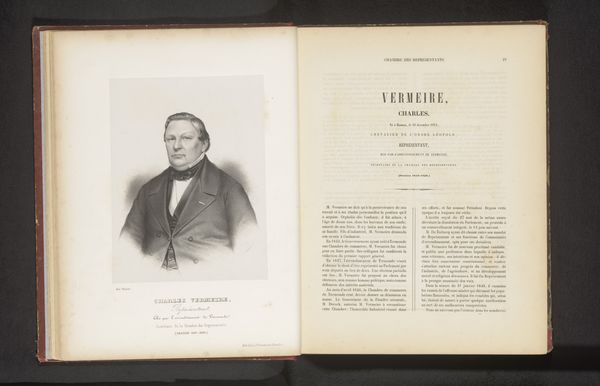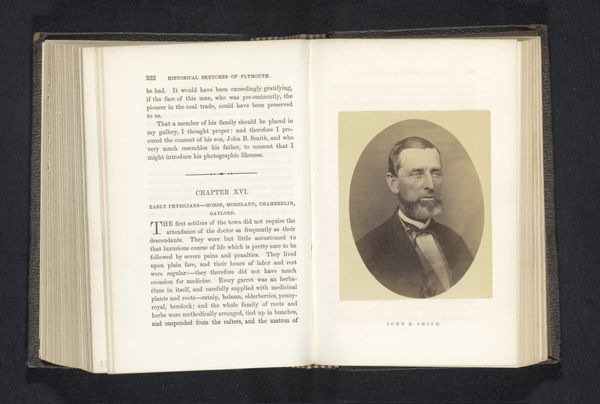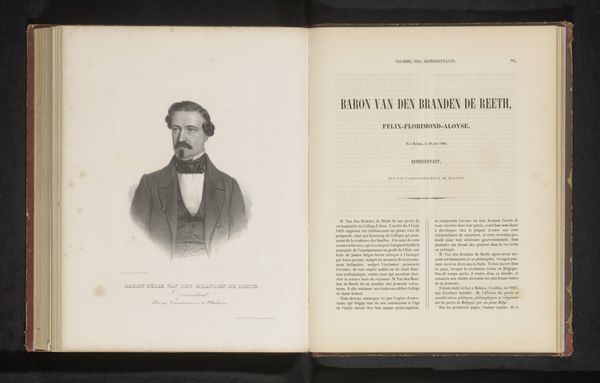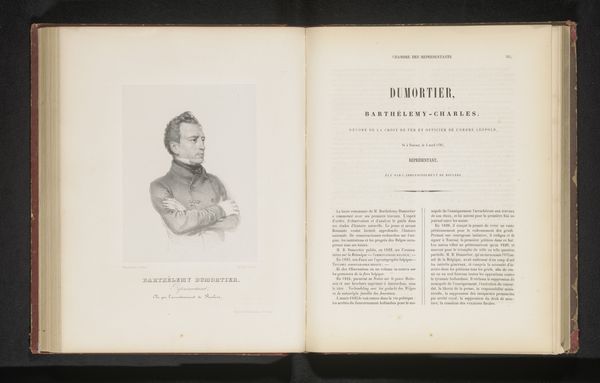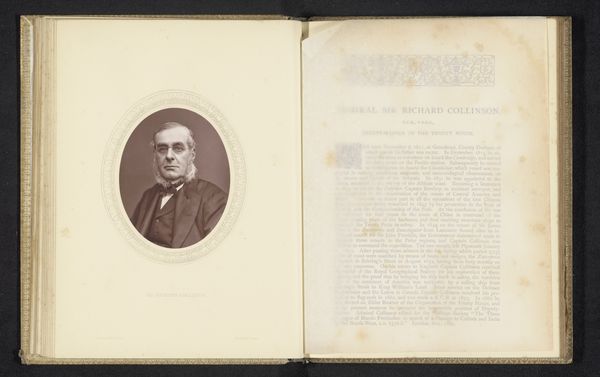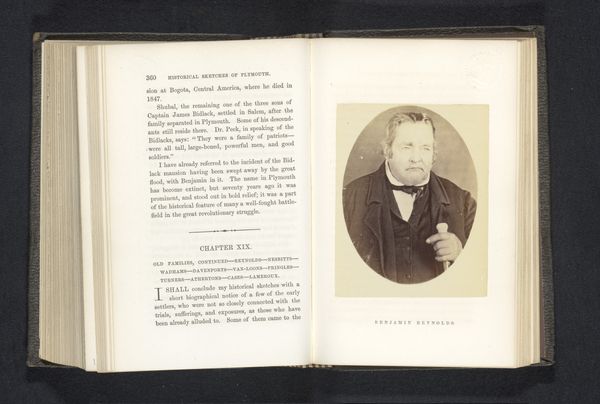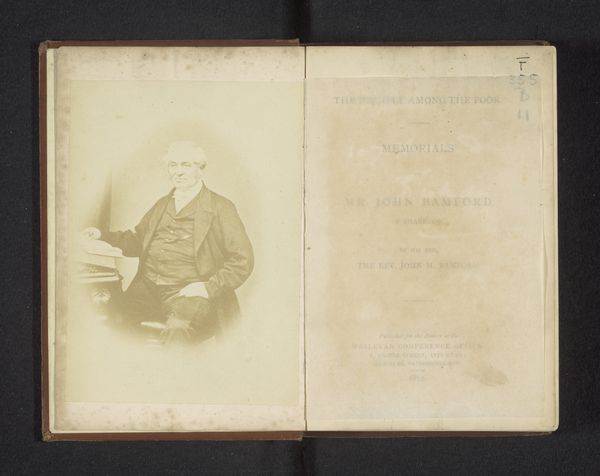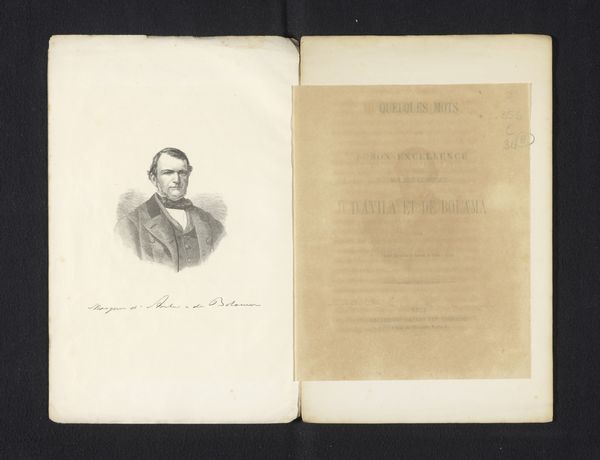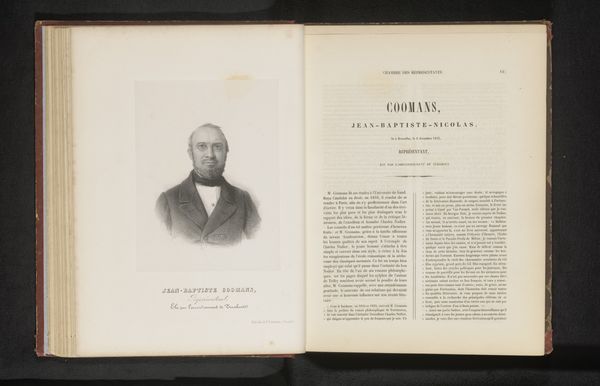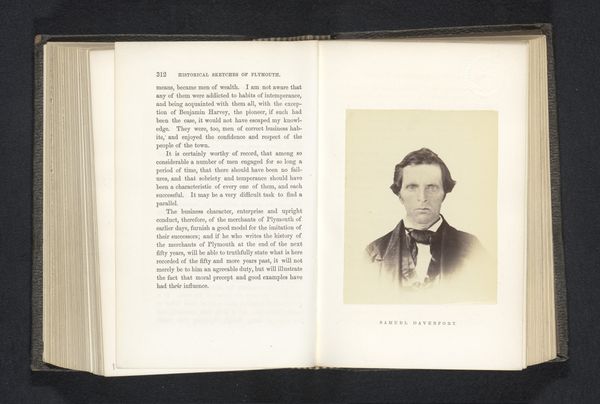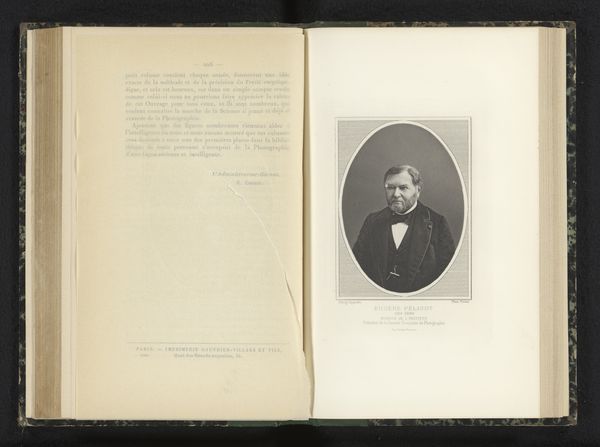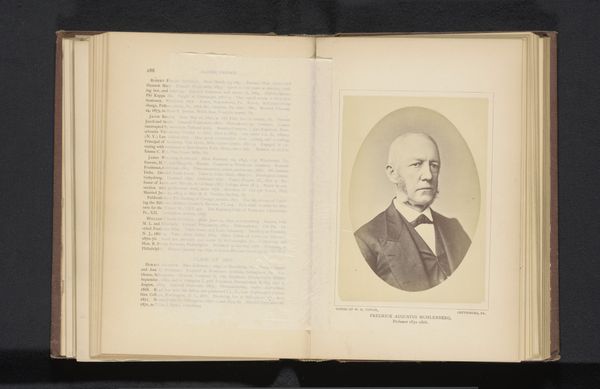
Reproductie van een foto van een portret van Constant d'Hoffschmidt before 1858
0:00
0:00
print, etching, engraving
#
portrait
# print
#
etching
#
history-painting
#
engraving
Dimensions: height 204 mm, width 151 mm
Copyright: Rijks Museum: Open Domain
Curator: Before us we have a reproduction, dated before 1858, of a portrait of Constant d'Hoffschmidt by Henri Borremans. The work is an etching, likely extracted from a book given its placement and facing text. Editor: It has a very stolid, official feel, doesn’t it? The gray tones create an atmosphere of almost severe respectability. It feels quite balanced, mirroring image and text symmetrically on opposite pages. Curator: Etchings and engravings were often employed to disseminate images of political figures. I suspect it functioned as a visual memory aid, anchoring Constant d’Hoffschmidt’s legacy within the minds of his contemporaries—and subsequent generations, obviously! Editor: Note how the lines, rendered through the engraving technique, are finer in the face and coarser in the clothing, adding depth and modeling with very limited value gradation. Curator: That makes him feel tangible, less an abstract ideal, and more like a recognizable individual. In photographic reproductions or prints, you see this concern often. This makes me think, what visual cues indicate social status and trustworthiness? The dark suit, of course, but what about his expression? Editor: Direct, forthright. No frivolous smiles! The three-quarter view and placement on the left page mirrors, in effect, his textual bio that must follow him. You might even interpret it that the face becomes text, readable as meaning. Curator: Indeed. Borremans’ artistry transcends simple documentation; it immortalizes, perhaps even mythologizes, Constant d'Hoffschmidt's persona through readily accessible visual means. His work acted as propaganda by encoding, even unconsciously, the cultural and political ideals into a recognizable image. Editor: Propaganda in the best sense. The book almost resembles a historical encyclopedia with him placed as its heroic central figure! Curator: Studying such reproductions deepens our appreciation of image circulation in the 19th century and demonstrates how visuality supported structures of power and fame. Editor: And even allows us to witness how subtle stylistic choices once shaped perceptions of prominent people.
Comments
No comments
Be the first to comment and join the conversation on the ultimate creative platform.
